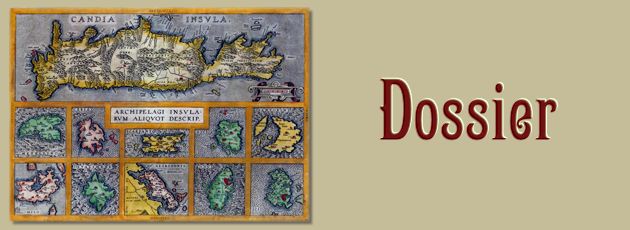“‘Nothing was reconciled: everything was beautiful’: Gould’s Book of Fish and the Critique of Colonial Modernity”
Paul Stasi, University at Albany-SUNY
“One prominent metaphor based around the figure of the heroically resourceful castaway links the island trope to ideological discourses of radical individualism, wherein the uniquely gifted and courageous individual rises above the constraints imposed by the mediocrity of the many” – Peter Hay(1)
“My mother is a fish” – William Faulkner, epigraph to Gould’s Book of Fish(2)
 Of the many memorable characters in Richard Flanagan’s 2001 novel Gould’s Book of Fish, perhaps the most remarkable is the Commandant, a figure of Kurtzlike grandeur who dominates Flanagan’s depiction of the Sarah Island penal colony in the early 19th century. The Commandant’s “ambition” for the island “was as enormous as his appetites . . . & it was no less than the creation of a nation that would have as its heart the city-state he was already building the foundations for, with him for its Father” (100). As with Conrad’s great imperialist, the Commandant is an inspiring orator. “When he spoke,” says William Gould, a convict on the island and the narrator of the bulk of the book, “anything & everything became possible” (103). And yet when Gould and his fellow convicts first arrive on the island, they discover “all the requisite brutality and squalid circumstances you might expect of such a place,” making they “unsure whether [Sarah Island] was to be the Commandant’s dream or the convicts’ nightmare” (104, 105). Ultimately the answer seems clear. The Commandant’s “remaking of Europe as a stunted island of misconceptions” leads to his ruin, but not before the spilling of a “sea of convict blood” (107, 157). Flanagan’s novel presents us here with a dialectic of enlightenment worthy of Horkheimer and Adorno, demonstrating two interwoven critiques, each of which depends, in part, on its island setting. The first is the violence inherent in the concept of enlightenment itself, with its murderous dissections of nature embodied in the novel most fully by Lempriere the Surgeon. The second is the way this conceptual violence is intimately related to the project of imperialism, as the penal colony is born from and subsequently transforms the enlightenment ideals to which its various administrators subscribe.
Of the many memorable characters in Richard Flanagan’s 2001 novel Gould’s Book of Fish, perhaps the most remarkable is the Commandant, a figure of Kurtzlike grandeur who dominates Flanagan’s depiction of the Sarah Island penal colony in the early 19th century. The Commandant’s “ambition” for the island “was as enormous as his appetites . . . & it was no less than the creation of a nation that would have as its heart the city-state he was already building the foundations for, with him for its Father” (100). As with Conrad’s great imperialist, the Commandant is an inspiring orator. “When he spoke,” says William Gould, a convict on the island and the narrator of the bulk of the book, “anything & everything became possible” (103). And yet when Gould and his fellow convicts first arrive on the island, they discover “all the requisite brutality and squalid circumstances you might expect of such a place,” making they “unsure whether [Sarah Island] was to be the Commandant’s dream or the convicts’ nightmare” (104, 105). Ultimately the answer seems clear. The Commandant’s “remaking of Europe as a stunted island of misconceptions” leads to his ruin, but not before the spilling of a “sea of convict blood” (107, 157). Flanagan’s novel presents us here with a dialectic of enlightenment worthy of Horkheimer and Adorno, demonstrating two interwoven critiques, each of which depends, in part, on its island setting. The first is the violence inherent in the concept of enlightenment itself, with its murderous dissections of nature embodied in the novel most fully by Lempriere the Surgeon. The second is the way this conceptual violence is intimately related to the project of imperialism, as the penal colony is born from and subsequently transforms the enlightenment ideals to which its various administrators subscribe.
Gould’s Book of Fish works, then, as a kind of Robinsonade in reverse. In contrast to the “radical individualism” typical of the genre, we have the violence perpetrated on two distinct communities: the Aboriginal natives, barely seen but prominent in the book’s architecture, and the prisoners themselves. And there is little “rising above imposed constraints,” in the novel, unless we consider the way our narrator manages to produce his book while in a cell whose water level rises and falls with the tide. Gould’s Book of Fish presents us with a sharp critique of the values of the typical Robinsonade, but it does so by mobilizing that genre’s characteristic metaphoric device of the “island as nation.” If the intellectual impositions of Enlightenment tend to flow from center to the periphery, Flanagan uses his story – set in the periphery (Sarah Island) of the periphery (Tasmania) of the periphery (Australia) – to demonstrate how the violence inherent in these notions is revealed in, and radiates out from, the peripheral space. Sarah Island thus starts as a metaphor for both Tasmania and Australia, before becoming a figure of colonial modernity itself.
Balanced against this bleak image of modernity is what can seem like a relatively straightforward humanist core, one that draws its strength from the transformative possibilities inherent in art as well as a more traditional source. “At its heart,” Flanagan claimed in a 2001 interview, “Gould’s Book of Fish is a love story about a poor white convict and a black woman, and as such it is a novel that speaks to the heart of contemporary Australia.”(3) Against the backdrop of isolation, then, Flanagan creates a story about connection, about the desire for “that sixth sense that allows us to see miracles and have visions and understand that we are something other, larger than what we have been told” (G 3). It is this “something other” that complicates our story, making Flanagan a peculiar kind of humanist, one who rejects the idea of the self-legislating subject, who is the seat of his/her own authority, demonstrating instead the way subjects are constituted by forces from both the past and the present that stand largely outside of their control.
To explore this relationship between subject and historical ground, Flanagan builds his novel out of what Bob Hodge and Vijay Mishra have argued are crucial elements of Australian national identity and, consequently, its literary representations.
According to Hodge and Mishra, “Australia was founded on a double guilt: the dispossession of the Aboriginal people and the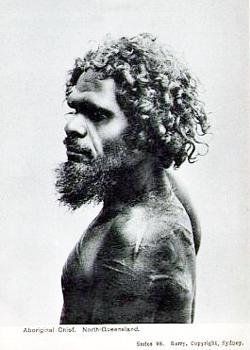 excessive punishment of large numbers of British and Irish people, mainly from the poorer classes, for crimes against the property of the ruling class.”(4) They go on to note the continuing over-representation of Aboriginals in Australia’s penal system, a fact which raises a key question: “How are we to link the historical reality of the convict era to the set of representations over time reaching up to the present?” (332). “What,” they continue, “is the social meaning and function of the theme of criminality in Australian mythology, in its double form, the virtuous convict and the heroic bushranger?” (332).
excessive punishment of large numbers of British and Irish people, mainly from the poorer classes, for crimes against the property of the ruling class.”(4) They go on to note the continuing over-representation of Aboriginals in Australia’s penal system, a fact which raises a key question: “How are we to link the historical reality of the convict era to the set of representations over time reaching up to the present?” (332). “What,” they continue, “is the social meaning and function of the theme of criminality in Australian mythology, in its double form, the virtuous convict and the heroic bushranger?” (332).
Gould’s Book of Fish, as I’ve already noted, is about William Gould a forger who also happens to be an artist; indeed one of the consistent themes of the book is that there may be no difference between the two. Similarly fact and fiction are seamlessly blended as the book expands and transforms details of the real life William Buelow Gould – who served several prison terms after his arrival in Tasmania in 1827 and did in fact produce a Book of Fish held in the State Library of Tasmania – into the elaborate world of the fictional Gould. And its convicts are obsessed with rumors of Matthew Brady, the real life bushranger whom Gould hopes will “liberate Sarah Island” and thus “avenge history” (G 314, 313). But what exactly does it mean to avenge history? To understand this concept further we need to investigate three areas of the novel. The first is the relationship between the novel’s two temporal frames, the one in present-day Hobart, where a man named Sid Hammet discovers and then presents us with the narrative of the Book of Fish. The second is this narrative’s depiction of 19th century Sarah Island, which in turns opens onto the final area of investigation: the way history is both represented and transmitted. In this way, Flanagan, addresses Hodge and Mishra’s question about the relationship between the present and the past in contemporary Australia, suggesting that we will never have an adequate relationship to the present if we refuse to understand our past. Ultimately, however, Flanagan’s novel represents not, simply, an alternative to official history – Gould himself disavows the notion that his “fish are some alternative upside-down Registry” of the colony – but gives voice to a longing to stand outside of the perpetual cycle of guilt and recrimination that constitutes the particular history of Australia as much as it does colonial modernity itself (G 46).
I. Temporal Frames
The best way to begin to unfold the text’s relationship to history is to look more closely at the two temporalities of the novel. It opens with a man named Sid Hammet, who devotes himself “to buying old pieces of rotting furniture which I distressed with every insult conceivable” (G 4). These insults are meant to dupe “the tourists who were their inevitable 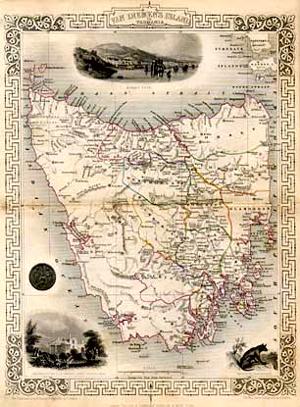 purchasers, buying what they mistakenly thought to be flotsam of the romantic past, rather than what they were, evidence of a rotten present” (G 5). These tourists are, inevitably, Americans, “endearing questions marks of human beings,” though when Hammet says “endearing” what he really means is “that they had money” (G 6). What the Americans are most excited to find are remnants of Nantucket whalers lost on the shores of 19th century Tasmania, a desire Hammet understands as the longing for a particular kind of story, one “of the only types that they would ever buy — an American story, a happy, stirring tale of Us Finding Them Alive and Bringing Them Back Home” (G 6). What the Americans enjoy are stories of recovery, narratives that cast themselves in the position of the hero whose journey into the world leads not to an encounter with otherness, but rather to the discovery of some lost piece of himself, which he can then return to safety. Tasmania, in this narrative, becomes simply a detour, a placeholder through which the Americans are mediated back into themselves, shoring up the fragments of their subject positions.
purchasers, buying what they mistakenly thought to be flotsam of the romantic past, rather than what they were, evidence of a rotten present” (G 5). These tourists are, inevitably, Americans, “endearing questions marks of human beings,” though when Hammet says “endearing” what he really means is “that they had money” (G 6). What the Americans are most excited to find are remnants of Nantucket whalers lost on the shores of 19th century Tasmania, a desire Hammet understands as the longing for a particular kind of story, one “of the only types that they would ever buy — an American story, a happy, stirring tale of Us Finding Them Alive and Bringing Them Back Home” (G 6). What the Americans enjoy are stories of recovery, narratives that cast themselves in the position of the hero whose journey into the world leads not to an encounter with otherness, but rather to the discovery of some lost piece of himself, which he can then return to safety. Tasmania, in this narrative, becomes simply a detour, a placeholder through which the Americans are mediated back into themselves, shoring up the fragments of their subject positions.
It is little surprise, then, that they have no interest in the personal narrative of Hammet’s colleague, Mr. Hung, a Vietnamese man who perilously escaped his home country to find refuge on Australian shores. This story is deemed “too dirtily, irremediably human” for the “question marks,” for what they want is, rather
something that walled them off from the past and from people in general, not something that offered any connection that might prove painful or human. They wanted stories, I came to realize, in which they were already imprisoned, not stories in which they appeared along with the storyteller, accomplices in escaping (G 7).
The life-history of a refuge from Vietnam is, of course, particularly ill-suited for satisfying this set of desires; it could not help but remind the Americans of the very past they hope to forget. What seems most important here, however, is that narrative becomes, for the tourists, a way to distance themselves from both the world and from history itself. Narrative, here, is the vehicle of repetition compulsion. Along with the circularity of their favorite story – “Us Finding Them Alive and Bringing Them Back Home” – the Americans also favor the comfort of the familiar.
Two pages later this comfort is tied directly to both commodification and the world economic conditions within which these two disparate subjects – question mark and distressed antique dealer – meet. “The tourists,” Hammet again reminds us, “had money and we needed it” (G 8). He elaborates:
they only asked in return to be lied to and deceived and told that single most important thing, that they were safe, that their sense of security — national, individual, spiritual — wasn’t a bad joke being played on them by a bored and capricious destiny. To be told that there was no connection between then and now, that they didn’t need to wear a black armband or have a bad conscience about their power and their wealth and everybody else’s lack of it; to feel rotten that no-one could or would explain why the wealth of the few seemed so curiously dependent on the misery of the many (G 8-9).(5)
All “they were really asking,” Hammet concludes, was “‘Are we safe?’ and we were really replying, ‘No, but a barricade of useless goods may help block the view’” (G 9).
The desire to evade the past takes on a specific meaning here: it is the desire to avoid confronting the economic inequities of the present, which are themselves the more or less direct results of the exploitations of the past. The Americans refuse to understand how their present good fortune – their ability, say, to fly to Tasmania for holiday – rests on a history of violence and underdevelopment. The objects Hammet sells them, like all good fetishized commodities, are designed to shield this history from their view. Through his system of distressed antiques, then, Hammet transforms the useless goods of a degraded present into the falsified image of a marketable past. In doing so, he demonstrates how an inaccurate view of the present is constituted by an inaccurate view of the past. The two fit seamlessly into one another. A false version of history – one built on a refusal to understand the world – props up a stable form of subjectivity.(6)
a history of violence and underdevelopment. The objects Hammet sells them, like all good fetishized commodities, are designed to shield this history from their view. Through his system of distressed antiques, then, Hammet transforms the useless goods of a degraded present into the falsified image of a marketable past. In doing so, he demonstrates how an inaccurate view of the present is constituted by an inaccurate view of the past. The two fit seamlessly into one another. A false version of history – one built on a refusal to understand the world – props up a stable form of subjectivity.(6)
Into this simulacrum of historical continuity, The Book of Fish intrudes. Discovered by Hammet inside an old meat safe in a junk shop outside of town, the book gives off a “faint, but increasingly bright purple glow” (G 12). Hammet is mesmerized, and despite his first “base impulse to rip out the many paintings of fish and frame them up and sell them” he continues to read and reread the book, ultimately abandoning any effort “to profit from it” (G 16). The Book of Fish thus represents an image of the past that somehow resists commodification. This object, we immediately are made to understand, will not fit so easily into the story Hammet has been so willing to produce for his customers.
Hammet quickly becomes enchanted with the book and takes “to carrying it everywhere, as if it were some powerful talisman, as if it contained some magic that might somehow convey or explain something fundamental to me” but when he attempts to have it authenticated by various sources, he is told that the book is false, that it “seemed to concur with the  known facts only long enough to enter with them into an argument” (G 16). Hammet, the distressed antiques dealer, finds himself in an unusual position. Having discovered what he felt was “a genuine work of great historical interest,” he is instead congratulated “on the quality of my forgery and wished. . . all the best in my continuing work in tourism” (G 17).
known facts only long enough to enter with them into an argument” (G 16). Hammet, the distressed antiques dealer, finds himself in an unusual position. Having discovered what he felt was “a genuine work of great historical interest,” he is instead congratulated “on the quality of my forgery and wished. . . all the best in my continuing work in tourism” (G 17).
This part of the narrative culminates in the office of the “eminent colonial historian Professor Roman de Silva” who takes a similarly dim view of the book (G 17). “History,” he pompously declares, “is what you cannot see. History has power. But a fake has none” (G 18). Despite the fact that the book describes some verifiable places and people, “almost nothing in the Book of Fish agrees with the known history of that island hell. Few of the names mentioned in your curious chronicle are to be found in any of the official documents that survive from that time” (G 20). Thus the book’s theme of the contrast between official records and its own narrative of the past – what Hammet describes as looking “for truth in facts and not in stories” – is announced in its opening pages (G 20). For Hammet, however, the book cannot be a fraud, for frauds do not quarrel with facts. “Swindling,” he notes, “requires not delivering lies but confirming preconceptions, the book, if it was a fraud, made no sense, because none of it accorded with any expectation of what the past ought to be” (G 21). We observe here the same circle described in the narratives favored by American tourists. Historical records establish themselves as the official version of the past, and the only way new information can be assimilated into this version is if it fundamentally accords with what we already know. History, in this sense, tells the same story over and over again relegating those facts which might contradict it to the realm of apocrypha.
This same relationship between official history and what we might call history from below is thematized within Gould’s narrative through the character of Jorgen Jorgensen, the official record keeper of the island. We first encounter Jorgensen as The King, a figure who shares the watery cell in which Gould writes his book and whose silence Gould continually interprets as critique. Only later do we learn that the King is, in fact, dead, his peculiar ability to increase in size while all others in the prison starve a result not of constitutional vigor but rather of the bloating of his ever-hydrating corpse. In life, Jorgensen was a man, who “had read too many books . . . only to discover that the world did not correspond to anything he had read” (G 251). He is particularly suited, then, to become the official record-keeper of the prison island, producing a narrative that “seemed wrong in almost every detail” (G 281). Gould has here stumbled upon Jorgenson’s registry – he has yet to begin composing his own work – and he examines its pages closely, hoping to find a record of his own experience. Instead the world of the Registry “was at war with the reality in which we lived. The bad news was that reality was losing. It was unrecognizable” (G 284-5). Present are none of the Commandant’s failed ambitions, none of the spilled convict blood. Instead what we see is a straight-forward record of progress:
the long ordered columns in which he had tabulated statisticks showing a declining use of the lash over several
years, the books of handwritten sermons, the drawings of new cells, etc etc, collectively depicting a regime of necessary corporal punishment battling the convicts’ inherent brutality slowly ceding to more enlightened practices . . . It was no doubt slow & often tedious work for Jorgensen, but by obeying laws of pattern & succession, of cause & effect — which never characterize life but are necessary for words on paper — he had created an image of the settlement that would persuade posterity of both the convicts’ animality & the administrator’s sagacity, a model of the power of unremitting, tempered discipline to transform pickpockets into cobblers & catamites into Christians (G 287).
Quite clearly we see here not only the prison colony’s self-image — its reluctant yet justified use of cruelty, its enlightenment narrative of progress, classification and order, its transformation of punishment into discipline – but also the origins of the records Professor de Silva consults in the novel’s 21st century frame. Official records are seen here to be interested and subjective documents, aligned with notions of cause and effect that seem dictated more by the vagaries of ordered columns than by their presence in the world the documents purport to represent. The system of classification takes precedence over what it would classify, as Gould confronts “a book with the obscene ambition of becoming a world” (G 291).
Thus Gould comes to find himself more imprisoned by penal colony’s systems of representation than he does by the actual prison itself. The world of the registry, Gould argues, is “a system in which one was accorded an ignoble but necessary part, like a piston head or belt in the steam engines” (G 289). Within this “universal history, all he had seen & known . . . was now lost. . . If freedom as Capois Death . . . maintained, exists only in the space of memory, then he & everybody he knew were being condemned to an eternity of imprisonment” (G 290).(7) Characteristically Gould here refers to himself in the third person, a stylistic tick that in this passage takes on thematic importance, for here the pronominal shift is illustrative of the loss of personal history attendant on becoming part of “universal history.” In becoming the object of another’s narrative, Gould loses his particular reality. No longer speaking as an I, Gould becomes unmoored from his past and, consequently, loses the possibility of a future. He is, in the language of Capois Death, another of the novel’s 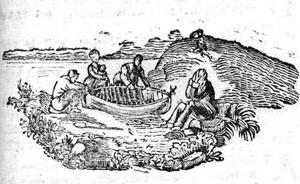 fictionalized historical personages, imprisoned within the confines of Jorgenson’s book.
fictionalized historical personages, imprisoned within the confines of Jorgenson’s book.
At one level, then, The Book of Fish is the unassimilatable truth that both Professor de Silva and the American question marks are unable to recognize, tied as they are to narratives that reinscribe their positions within a particular set of social conditions. History, here, becomes a vehicle for the reproduction of the conditions of production, and it perpetuates itself by failing to recognize anything that falls outside of its pre-digested narratives. In this way, Flanagan draws a straight line between the refusal to acknowledge colonial violence at the moment of its perpetuation and the ideologies of the contemporary neocolonial world, which are seen to be a continuation of this original blindness. And yet Flannagan does not rest with a straight-forward contrast between real historical experience and ideologically conceived propaganda. Rather he directly thematizes the question of how experience is mediated, by multiplying the various narratives within the book itself, suggesting that the truth emerges, not simply, from its recovery and restitution, but rather from the conflicts that arise when competing truths are confronted with each other. First, however, it is worth investigating a bit more the specific content of Gould’s life experience, before examining the various ways the book examines the mediation of historical knowledge.
II. Dancing the Enlightenment
Gould’s experience on the colony is dominated by two figures: the Surgeon Lempriere and the Commandant, each of whom represent a different face of the Enlightenment humanism Flanagan reads as constitutive of colonial modernity. The Surgeon is the scientist, draining the world of all value through his murderous dissections, which derive both metaphorically and literally from the colony and its exploited convicts. The Commandant represents the concomitant aggrandizement of human authority and the violence that results when ideas from the metropolitan center are imposed on the periphery. Taken together the two figures represent the transference of authority from the world to the human subject, a process that corresponds to nothing in Gould’s own life experience.
For much of the narrative, then, Gould functions in a manner similar to that of Rosencrantz and Guildenstern in Stoppard’s famous play. By almost entirely failing to understand what goes on around him, he is able to shed light on the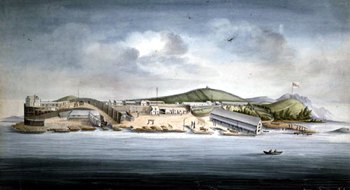 various pieties and absurdities that make up a social order that rigorously excludes him. The clearest example of this narrative structure occurs in Gould’s scenes with the Surgeon Lempriere. Lempriere is obsessed with becoming a member of the Royal Society in London, which he hopes to achieve by properly classifying “NOT JUST ANIMALS — ALL LIVING THINGS — EN UN MOT? — PEOPLE” (G 122). In barely grammatical, and entirely capitalized, speech, Lempriere outlines his desire to extend “Bentham’s principle of the panopticon” to natural history: “OUR TASK. . . NOT INTERPRETING NATURE FOR DECORATION — SEEKING TO CLASSIFY — TO ORDER NATURE . . . MAN’S DOMINION WILL BE ENTIRELY KNOWN & KNOWABLE, & MAN’S MASTERY COMPLETE — HIS FINAL EMPIRE, NATURE — DO YOU UNDERSTAND?” (G 129). Gould’s (mental) reply is typical: “I didn’t” (129).(8) Adopting a strategy of heavy drinking and “occasionally repeating the last phrase [Lempriere] had spoken,” Gould listens as the Surgeon explains how his artistic skills might aid in his personal quest to achieve scientific fame by “breaking the world into a million classifiable elements” (G 121, 124).
various pieties and absurdities that make up a social order that rigorously excludes him. The clearest example of this narrative structure occurs in Gould’s scenes with the Surgeon Lempriere. Lempriere is obsessed with becoming a member of the Royal Society in London, which he hopes to achieve by properly classifying “NOT JUST ANIMALS — ALL LIVING THINGS — EN UN MOT? — PEOPLE” (G 122). In barely grammatical, and entirely capitalized, speech, Lempriere outlines his desire to extend “Bentham’s principle of the panopticon” to natural history: “OUR TASK. . . NOT INTERPRETING NATURE FOR DECORATION — SEEKING TO CLASSIFY — TO ORDER NATURE . . . MAN’S DOMINION WILL BE ENTIRELY KNOWN & KNOWABLE, & MAN’S MASTERY COMPLETE — HIS FINAL EMPIRE, NATURE — DO YOU UNDERSTAND?” (G 129). Gould’s (mental) reply is typical: “I didn’t” (129).(8) Adopting a strategy of heavy drinking and “occasionally repeating the last phrase [Lempriere] had spoken,” Gould listens as the Surgeon explains how his artistic skills might aid in his personal quest to achieve scientific fame by “breaking the world into a million classifiable elements” (G 121, 124).
Despite not understanding most of what the Surgeon says, Gould is able to correctly analyze his relationship with the Royal Society’s representative, Mr. Cosmo Wheeler: “It seemed to me that if this English natural historian was noted, it may well have been because he was building a fair old career out of the various bits & pieces the Surgeon & his other colonial collectors were shipping back to him. For his part, the Surgeon appeared blind to the uses to which he was being put” (G 125). While Lempriere’s scientific ambitions are obscure to Gould, his peripheral status is not. Gould, then, understands the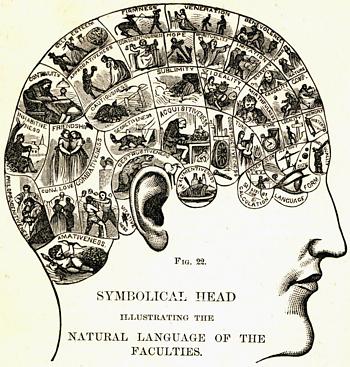 subjective interests that Lempriere’s belief in scientific objectivity obscures, and he does so by applying the lesson of his own experience as a peripheral subject. Experience, here, emerges as a category from which one can critique the abstract ambitions of classifying science.(9) And what it reveals is that Lempriere’s peripheral status is more important than his intellectual ambitions. Even those who run the colony are, to a large extent, subservient to the interests of the metropole.
subjective interests that Lempriere’s belief in scientific objectivity obscures, and he does so by applying the lesson of his own experience as a peripheral subject. Experience, here, emerges as a category from which one can critique the abstract ambitions of classifying science.(9) And what it reveals is that Lempriere’s peripheral status is more important than his intellectual ambitions. Even those who run the colony are, to a large extent, subservient to the interests of the metropole.
Indeed, Flangan’s text continually mobilizes bodily experience to undermine the ideals of the colony. Exploring Sarah Island Gould seems, at times, like Candide, encountering violence and misery wherever he goes. So, for instance, as he walks to Mr. Lemprier’s quarters for their second meeting, he “passed a flogging taking place in the muster yard. The flagellator was pausing between each stroke of the cat, running the tails between his fingers to squeeze out the excess blood” (G 119). Such descriptions pepper the narrative, and Gould treats them entirely matter-of-factly. They become, in effect, part of its background.
The comparison of Gould to Candide is not merely idle, however, for the book contains many references to Voltaire, almost always in a sexual context. One such moment occurs as Lempriere is droning on about his various schemes. Attempting to please Lempriere, Gould “hastily fashioned several stories that seemed agreeable to him” which causes him to be flooded with memories. One of these memories concerns the time he spent working in the pottery shop of Old Gould, the man from whom he took his surname. It seems Old Gould was quite fond of Voltaire, and his daughter was quite fond of our hero. Sometimes the old potter would have his daughter “stand up in front of the workshop with a small bust of Voltaire’s sitting on the bench above her with an inscrutable smile & she would read to us from the great man’s work” (G 114). This inscrutable smile is soon explained:
So taken with Candide & Dr Pangloss were we that me & my beauty . . . began dancing the Enlightenment . . . & she would take such joy from Voltaire’s smile of reason entering her, advancing and receding like a slow wave waiting to break, thinking all the time to herself how lovely it was to have one’s own garden attended to so (G 114-5).(10)
Enlightenment values are here deflated by association with bodily experience as the dream of reason conquering the world is reduced, in Nietzschean fashion, to a more elemental drive. Gould here counters abstract reason with those realms – sexuality, experience, history – it habitually represses.
The most graphic example of this kind of bodily logic occurs when Lempriere abandons his efforts at natural history and turns, instead, to phrenology. Carrying around a bucket of black man’s heads, Lempriere declares that the “STUDY OF 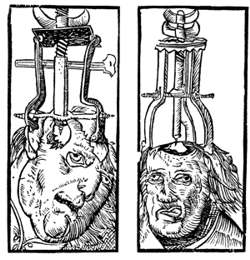 SKULLS WILL REVEAL THE FUNDAMENTAL DIFFERENCES BETWEEN — PRECISE NATURE OF — EXACT REASONS FOR HIERARCHY IN RACES OF MAN” (G 232). Solving what he calls science’s “GREATEST CHALLENGE” will, he hopes, put him back in the good graces of Sir Cosmo Wheeler (G 232). Colonial exploitation is here linked directly to scientific reason, which is further undermined when Lempriere falls prey to his ravenous drunken pig Castlereagh. Earlier we had encountered the pig squealing, while Lempriere was yelling about “how the past was the past, but his interest was the future” (G 231). Phrenological research would allow him to “finally be of some use to Civilisation. At this last word the pig Castelreagh awoke startled, & began trotting around its pen squealing” (G 231). This deflation of civilized pretension, however, pales in comparison to Gould’s ultimate discovery of Lempriere’s bones amidst a giant pile of pig shit. Predictably enough, these bones are then shipped off to England with the rest of Lempriere’s skulls: “There was in all this a symmetry & beauty that did not escape me —the way the Great Scientist in death had become part of his own Immortal System” (G 248). Labelled specimen MH-36, Lempriere’s skull at last attains the notoriety that eluded him in life when Cosmo Wheeler declares it “one of the great scientifick achievements of our age” for its “hideous depravity . . . and generally regressive shape” proves “beyond doubt the Tasmanian negro is of an entirely separate species . . . approaching the mere animal” (G 302). Here Flanagan makes the links between the scientific impulse to categorize the world and the racialized hierarchy of the colonial project explicit, as we see the way an ideological investment in indigenous inferiority trumps the scientific process itself, revealing the will to power behind science’s claims to objectivity and disinterest.
SKULLS WILL REVEAL THE FUNDAMENTAL DIFFERENCES BETWEEN — PRECISE NATURE OF — EXACT REASONS FOR HIERARCHY IN RACES OF MAN” (G 232). Solving what he calls science’s “GREATEST CHALLENGE” will, he hopes, put him back in the good graces of Sir Cosmo Wheeler (G 232). Colonial exploitation is here linked directly to scientific reason, which is further undermined when Lempriere falls prey to his ravenous drunken pig Castlereagh. Earlier we had encountered the pig squealing, while Lempriere was yelling about “how the past was the past, but his interest was the future” (G 231). Phrenological research would allow him to “finally be of some use to Civilisation. At this last word the pig Castelreagh awoke startled, & began trotting around its pen squealing” (G 231). This deflation of civilized pretension, however, pales in comparison to Gould’s ultimate discovery of Lempriere’s bones amidst a giant pile of pig shit. Predictably enough, these bones are then shipped off to England with the rest of Lempriere’s skulls: “There was in all this a symmetry & beauty that did not escape me —the way the Great Scientist in death had become part of his own Immortal System” (G 248). Labelled specimen MH-36, Lempriere’s skull at last attains the notoriety that eluded him in life when Cosmo Wheeler declares it “one of the great scientifick achievements of our age” for its “hideous depravity . . . and generally regressive shape” proves “beyond doubt the Tasmanian negro is of an entirely separate species . . . approaching the mere animal” (G 302). Here Flanagan makes the links between the scientific impulse to categorize the world and the racialized hierarchy of the colonial project explicit, as we see the way an ideological investment in indigenous inferiority trumps the scientific process itself, revealing the will to power behind science’s claims to objectivity and disinterest.
In a similar fashion, the grandiose schemes of the Commandant reveal the violence inherent in the colonial project of transforming peripheral spaces into models of European nations. The Commandant first arrives on the island in Crusoe fashion: he was a prisoner aboard a ship that crashed into the shores of Tasmania, leaving him the only survivor. After the wreck, he assumes the identity of one of the ship’s soldiers, and when he arrives at Sarah Island – in the company of Quaker missionaries who found him after several months on his own – he quickly takes over the colony, presumably by killing its previous ruler. “At first,” we are told, “the new Commandant was a model of obsequiousness to his distant superiors” (G 148). But he quickly comes to realize the indifference of the metropole to his needs, and so he decides to take matters into his own hands, ravaging the island for profit and trading independently with anyone who happens to come near it.(11) At the same time he begins receiving letters from Lieutenant Horace’s sister, Miss Anne that are filled with the latest news from Europe:
These letters tormented the Commandant who had become profoundly afflicted by the pathos of distance. They distorted his perspective of the Old World, diminishing the everyday, the banal, the chicanery & the mediocrity of Europe; exaggerating the marvelous, the sublime, the astounding of that distant world (G 156).
Gradually it seems to him that “not only matters technological, but the very marvel of modern nineteenth-century Europe were clearly a direct consequence of his sister’s imaginings” (G 156). Miss Anne “was inventing Europe” and so he would do the same (G 156). Thus is born the Commandant’s desire of making the “penal colony of Sarah Island the product of his imaginative will as surely as Miss Anne had Europe” (G 157).
His first move is to build a railroad, despite “those who quietly expressed the timid doubt that a train station on an island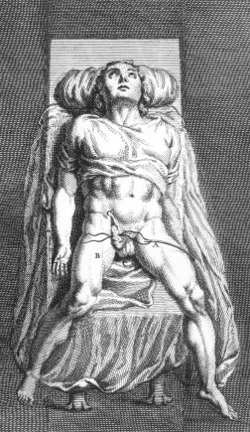 in the middle of a wilderness far off the coast of a nowhere land so blighted it existed only as a gaol was unlikely ever to be either the terminus or point of departure for any travel” (G 166). The Commandant disagrees, proclaiming that the railroad will naturally bring business, trading “our tyranny of isolation for the liberty of commerce” (G 166). Not surprisingly the railroad – that ubiquitous 19th century symbol for progress – fails.(12) Modernity, it seems, is not so easy to create out of sheer will.
in the middle of a wilderness far off the coast of a nowhere land so blighted it existed only as a gaol was unlikely ever to be either the terminus or point of departure for any travel” (G 166). The Commandant disagrees, proclaiming that the railroad will naturally bring business, trading “our tyranny of isolation for the liberty of commerce” (G 166). Not surprisingly the railroad – that ubiquitous 19th century symbol for progress – fails.(12) Modernity, it seems, is not so easy to create out of sheer will.
Not only does modernity fail to take hold on the island; the penal colony also becomes the space where the ideals of modernity are themselves transformed. Nowhere is this clearer than in the building of the Great Mah-Jong Hall. “The scale of such a building,” Gould tells us, “was staggering, its construction a nightmare of suffering for all who worked upon it” (G 185). The Hall’s most significant feature is the painting of Miss Anne’s “sacred words” on the walls, a task that falls directly to Gould. As with the railroad, this monumental undertaking fails to transform Sarah Island into a commercial success story, for it seems Europeans did “not wish to travel halfway across the globe to lose money in this wonder of the New World” (G 192-3). Empty and unused, the Hall is soon reclaimed by nature: “Miss Anne’s letters grew bedraggled & her words began washing away . . . all were soon encased in a hardening shell of . . . bird dung” (G 193). Gould continues to describe the decay:
Down all those inscriptions sacred to European ingenuity & European thought & the European genius of progress, stalactites of white & green droppings grew daily longer. Then the shit mounting on the floor began ascending like the wondrous voices of a choir of castrati into the exquisite European cornices, & shit was to be seen tumbling like eloquent Augustinian arguments out of the charming European gargoyles (G 194).
As with Lempriere, we see here how the noble ideals of the European Enlightenment turn to shit when applied to the colonial space. Colonialism not only illustrates the violence latent within the Enlightenment, but the colony itself is shown here as the precise site in which those ideals are transformed into instrumentalized justifications for the imposition of power. The colony becomes the necessary other of the progress narrated in Miss Anne’s letters, suggesting that the story of the Enlightenment requires the story of Sarah Island for it to be understood in full. Each only makes sense in light of its other.
III. A heightened mystery
Flanagan’s book does not rest, as I have already suggested, with the simple contrast between official lies and Gould’s experiential truths, between Jorgenson’s Registry and the Book of Fish, for it desires a space outside the logic of recrimination that dictates the particular story of historical redress I have so far been outlining. He does this, first, by 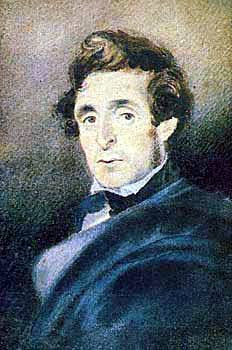 multiplying the number of texts with claims to historical veracity. In fact, as Xavier Pons has pointed out, there are at least five Book of Fish both within and outside of the text.(13) Outside of the novel, there is the text we hold in our hands, as well as the one Flanagan discovered in the State Library of Tasmania. Within the text itself, there is the version Hammet finds in the meat locker. But he also discovers a second Book of Fish, identical to the first “in all but one detail”: it “contained not a single written word” (G 23). This book recalls the original text upon which the novel is based, and its discovery sends Hammet reeling. He sets out, original book in hand, to drink in a pub, only to lose it almost immediately. His decision: to rewrite the book from memory. It is this rewritten text (the fourth Book of Fish) that we are reading, a book that may not be the one Gould wrote, Hammet admits, but is at least be “the same as the book I remember reading” (G 29). The effect of all this textual variation is to upend our desire to read Gould’s book as the singular truth that will overturn the official records of the penal colony. For where there is no authoritative text there can be no such singularity.
multiplying the number of texts with claims to historical veracity. In fact, as Xavier Pons has pointed out, there are at least five Book of Fish both within and outside of the text.(13) Outside of the novel, there is the text we hold in our hands, as well as the one Flanagan discovered in the State Library of Tasmania. Within the text itself, there is the version Hammet finds in the meat locker. But he also discovers a second Book of Fish, identical to the first “in all but one detail”: it “contained not a single written word” (G 23). This book recalls the original text upon which the novel is based, and its discovery sends Hammet reeling. He sets out, original book in hand, to drink in a pub, only to lose it almost immediately. His decision: to rewrite the book from memory. It is this rewritten text (the fourth Book of Fish) that we are reading, a book that may not be the one Gould wrote, Hammet admits, but is at least be “the same as the book I remember reading” (G 29). The effect of all this textual variation is to upend our desire to read Gould’s book as the singular truth that will overturn the official records of the penal colony. For where there is no authoritative text there can be no such singularity.
Even further, there is no way to secure oneself within any of the novel’s temporal frames, a fact which further disables our ability to verify one reality as the reality. In one of the novel’s craziest sections, Gould himself discovers what appears to be a fifth copy of the Book of Fish. This book, which Gould rescues from a fire, seems to be the one he has not yet finished writing. And yet it begins with “some sentences that made no sense whatsoever, about buying chairs as a futile act of atonement for unspecified but very real sins” (G 335). Apparently Gould is here reading the book we readers hold in our hands. Somehow the 21st century has found itself legible in the 19th. A similarly improbable occurrence happens near the very end of the book. The text we have been reading – the one ostensibly written by Gould – is itself comprised of two time-lines: the present-tense narrative where Gould composes the book in his watery cell and a past tense of the events that led to this moment. And yet by the book’s end the cell has been destroyed, Gould has been transformed into a fish and he is swimming, or so it seems, in the fishbowl of Mr. Hung. How can Gould exist in our present world? Who has written these final scenes?
For a further complication we can turn to the novel’s afterword, which I reproduce here in full:
Afterword
From the Colonial Secretary’s
correspondence file, 5 April 1831
[Archives Office of Tasmania]
Gould, William Buelow, prisoner number 873645; aliases Sid Hammet, ‘the Surgeon’, Jorgen Jorgenson, Capois Death, Pobjoy, ‘the Commandant’; identifying marks tattoo above left breast, red anchor with blue wings, legend ‘Love & Liberty’; absconded Sarah Island, 29 February 1831. Drowned attempting escape (G 402).
It seems Gould has, like the Commandant, built a nation out of his own imagination. All of the truth claims we were tempted to lodge within his text fall to the ground. Here we find the culmination of the novel’s blending of all its realities: for now Hammet, our 21st century guide to the world of 19th century Sarah Island, is himself folded into the consciousness of the historical Gould. The end of the book returns us, then, to its beginning. The whole work reads like a circle, reinforcing the continuity between Tasmania’s origins as a prison and its desolate postcolonial present. In contrast, then, to what Benjamin famously called “homogenous, empty time,” we a vision of history as a circle.(14) But this figure is hardly one we can celebrate, in opposition to a tyrannical and imperial linear progress, for the circle here represents the endlessly repetitive sense of dispossession that seems to grip the Tasmania Flanagan represents, signifying an achingly empty future. A strange form of realism emerges at the end of this, in some respects, magical realist book, one that is mimed in the pragmatic nature of its characters nearly all of whom would prefer even a philosophically flawed notion of development to no development at all.
form of realism emerges at the end of this, in some respects, magical realist book, one that is mimed in the pragmatic nature of its characters nearly all of whom would prefer even a philosophically flawed notion of development to no development at all.
In this final revelation, I think, we can see the most important link between Flannagan’s text and Robinson Crusoe. For Crusoe is, like Gould’s Book of Fish, also the story of a man who conjures an entire society out of his head. Indeed, as I have noted, Crusoe presents us with the paradigmatic case of the island as a metaphor for the nation. In Crusoe, a subject is formed by a social order and then, when separated from that order, is able to recreate it entirely out of his own subjectivity. Pace Donne, one man may, in fact, be an island because he contains within him the social order which gave him birth. No longer the product of historical development or tied to any specific environmental factors, bourgeois subjectivity is, here, projected as a natural state, one Crusoe is easily able to continue inhabiting without any of the supporting structures he has left behind.(15) Indeed this society is lodged within Crusoe himself, so that he is able to recreate Europe on the blank slate of a desert island. The journey to the island is not, then, a journey at all. Like the American tourists in Hobart, who travel all the way to Tasmania to find a piece of Nantucket, Crusoe rediscovers the society he has left behind, a society that is recreated via a detour through the subject.(16)
We have already seen how the Commandant – a version of Crusoe – fails in this ambition: his attempt to recreate Europe out of his own imagination leads to ruin. How, though, are we to make sense here of the similar suggestion that Gould himself has created the entire world of Sarah Island out of thin air? I think the first – and most obvious answer – has to be that we can not. That is to say, there is no possible way for us to adjudicate between the various textual levels of Flanagan’s text: there is no master narrative with which to unify all the different levels of reality. Rather we are meant to understand the fundamentally porous nature of narrative itself. No element of the text – none of its historical and temporal realities – can be taken in isolation. All parts of the narrative bleed into all other parts. And in its extension into our own reality – the sense that Gould himself is reading a book we are holding – the novel reaches out to include the reader. Thus we are to be distinguished form those question marks who want stories “in which they were already imprisoned” (G 7). Instead, we find ourselves embedded within the other term of Hammet’s opposition: “stories in which 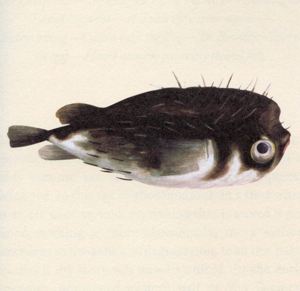 they [or, we should now say, we] appeared along with the storyteller, accomplices in escaping” (G 7). Which leads us back to the comparison between Gould and the Commandant. Recall that the Commandant began life as a prisoner. By ending the novel with Gould as a figure for the Commandant – even as the Commandant is reduced to an element of Gould – it becomes even harder for us to separate the two from each other. Convict and Commandant, each term is an aspect of the same reality. As the archivist who shows Hammet the wordless book declares: “their very mystery is heightened by each book’s distorted reflection of the other” (G 23). “I no longer wished to read lies as to who & why I was,” Gould declares towards the end of the novel, “I knew who I was . . . both gaoled & gaoler” (G 338). No one, Flanagan suggests, is innocent. To pretend otherwise is to ignore the way “the wealth of the few seemed so curiously dependent on the misery of the many,” to wall oneself behind a barricade of useless ideals (G 9).
they [or, we should now say, we] appeared along with the storyteller, accomplices in escaping” (G 7). Which leads us back to the comparison between Gould and the Commandant. Recall that the Commandant began life as a prisoner. By ending the novel with Gould as a figure for the Commandant – even as the Commandant is reduced to an element of Gould – it becomes even harder for us to separate the two from each other. Convict and Commandant, each term is an aspect of the same reality. As the archivist who shows Hammet the wordless book declares: “their very mystery is heightened by each book’s distorted reflection of the other” (G 23). “I no longer wished to read lies as to who & why I was,” Gould declares towards the end of the novel, “I knew who I was . . . both gaoled & gaoler” (G 338). No one, Flanagan suggests, is innocent. To pretend otherwise is to ignore the way “the wealth of the few seemed so curiously dependent on the misery of the many,” to wall oneself behind a barricade of useless ideals (G 9).
When describing his book, Flanagan called it, first and foremost, a love story. Indeed some of the book’s most lyrical passages are those where Gould describes his affection for Two-Penny Sal, the aboriginal woman who, not surprisingly, is both his and the Commandant’s mistress. The most stirring of these occurs when Gould is about to be dragged away to the watery cell. Falsely charged with the crime of killing Lempriere he has to bid goodbye (though not, as it turns out, for the last time) to Two-Penny Sal. “How I hated myself,” Gould declares, “How I wished to essay the universe I loved” (G 261). He continues to decry his situation:
No man could answer me my angry lamentations nor could they hear my jokes why I had to suffer this life. I was God & I was pus & whatever was me was You & You were Holy, Your feet, Your bowels, Your mound, Your armpits, Your smell & Your sound & taste, Your fallen Beauty, I was Divine in Your image & I was You & I was no longer long for this grand earth & why is it no words would tell how I was so much hurting aching bidding farewell? (G 261-2)
This passage can profitably be set aside another, where Gould discusses his art:
I care not to paint pretend pictures of long views which blur the particular & insult the living, those landscapes so beloved of the Pobjoys, those landscapes that trash the truth as they reach every upwards into the sky, as though we only know somewhere or somebody from a distance . . . while the truth is never far away but up close in the dirt, in the vile details of slime & scale & filth (G 93).
In each case, Gould celebrates the particular. Eschewing the “pathos of distance,” which afflicts both American tourist and Commandant alike, Gould proclaims an art of intimacy, where truth is produced via detail, where enlightenment can only occur when it is embodied.
Commandant alike, Gould proclaims an art of intimacy, where truth is produced via detail, where enlightenment can only occur when it is embodied.
How, though, is it possible that this novel of violence and torture can also be read as a love story? At the end of the novel, Gould asks himself the same question: “why when all the evidence of my life tells me this world smells worse than the old Dane’s bobbling corpse, why is it that I still can’t help believing that the world is good & that without love I am nothing” (G 400). He is left with two things “& I can’t bring them together . . . this knowledge of a world so awful, this sense of a life so extraordinary” (G 401). And yet, as we have already seen, the two are necessary components of each other, for only from the perspective of the “something other” than we have been can we criticize the circumstances we have created. Experience, then, is not the yardstick with which to bring the ideal down to earth, even as our ideals cannot separate themselves from the slime and the scale and the filth. In a similar fashion, when deciding whether to recreate Gould’s book from memory, Sid Hammet declares that he will do so because
to make a book, even one so inadequate as this wretched copy you now read, is to learn that the only appropriate feeling to those who live within its pages is love. Perhaps reading and writing books is one of the last defences human dignity has left, because in the end they remind us of what god once reminded us before He too evaporated in this age of relentless humiliations — that we are more than ourselves; that we have souls (G 28).
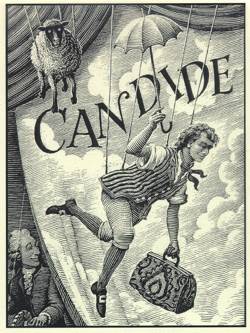 Writing, in this passage, becomes a way to acknowledge the “something other” that he here names love. Neither abstraction nor empiricism will suffice.
Writing, in this passage, becomes a way to acknowledge the “something other” that he here names love. Neither abstraction nor empiricism will suffice.
Ultimately, then, we cannot simply valorize the convict’s view of life over that of the Commandant, for neither exists in isolation. We must accept that “it wasn’t the English who did this to us,” Gould declares, “but ourselves” (G 401). In these final lines I hear an echo of Frantz Fanon, who at the end of Black Skins, White Masks writes:
I as a man of color, to the extent that it becomes possible for me to exist absolutely, do not have the right to lock myself into a world of retroactive reparations.
I, the man of color, want only this:
That the tool never possess the man. That the enslavement of man by man cease forever. . . . That it be possible for me to discover and to love man, wherever he may be.(17)
Flanagan offers a similar vision. Eschewing a world of retroactive reparations, he emphasizes our common responsibility for the world in which we live. Only in the endless back-and-forth between guilt and imagination, historical reality and transformative possibility, Flanagan seems to suggest, can we hope to move beyond the constitutive violence of colonial modernity, and enter that human history that, as Marx believed, has yet to begin.
Notes
1. Pete Hay, "A Phenomenology of Islands," 27.
2. Richard Flanagan, Gould's Book of Fish. Hereafter referred to parenthetically as G.
3. Online interview with Richard Flannagan. Richard Flanagan, A Few Words About Gould's Book of Fish (2001 [cited http://www.paperchain.com.au/server/richardflannagan.htm]). Accessed December 10, 2009.
4. Bob Hodge and Vijay Mishra, "Crimes and Punishment," 332.
5. Hammet – and, we can assume, Flanagan – thus accepts the central claim of Andre Gunder Frank’s seminal theory of the “Development of Underdevelopment.” “We must conclude,” Frank famously argues, “that underdevelopment is not due to the survival of archaic institutions . . . On the contrary, underdevelopment was an still is generated by the very same historical process which also generated economic development: the development of capitalism itself.” Though Frank has written extensively on this topic, the best short introduction to it remains his 1966 essay from which this quotation is taken. See Andre Gunder Frank, "The Development of Underdevelopment," 23.
6. Flanagan thus develops a critique of the notion of history not unlike that of Dipesh Chakrabarty, who has argued against the Eurocentric core he finds at the heart of the very idea of history, which rests on the development of the bourgeois individual articulated alongside the story of the nation. “What is effectively played down,” Chakrabarty argues, “in histories that either implicitly or explicitly celebrate the advent of the modern state and the idea of citizenship is the repression and violence that are as instrumental in the victory of the modern as is the persuasive power of its rhetorical strategies.” See Dipesh Chakrabarty, "Postcoloniality and the Artifice of History: Who Speaks for 'Indian' Pasts?," 21. As we shall see, Flanagan’s critique of history reveals precisely the “repression and violence” through which the discourse of modernization legitimates itself.
7. Chakrabarty similarly describes the way a “universal history” written in ignorance of “third world” realities tends to “read Indian history in terms of a lack, an absence, or an incompleteness.” Chakrabarty, "Postcoloniality and the Artifice of History: Who Speaks for 'Indian' Pasts?," 5.
8. When the two characters first meet, Lempriere praises Gould’s depiction of fish, suggesting that Gould has found his “METIER. . . IN FISH, YES?” and he continues by saying “IN MR TOBIAS ACHILELS LEMPRIERE. . . YOUR PATRON, YES YOU MAY ALSO HAVE FOUND THAT” (G 119). That Gould has no idea what he is saying is revealed by the next line: “And with that he was gone, & with him, reckoned I, any chance of my evading the chain gang” (G 119).
9. Of course, science also depends upon a specific notion of experience, namely the kinds of experiences that are repeatable within controlled environments. I use “experience” here to mean something like the complex ways the world itself resists the controls embedded within the scientific method, whose notion of experience might be more meaningfully described as empiricist, with all the tendencies towards abstract particularity that term implies.
10. A second bust of Voltaire appears later in the narrative. Originally used as a perfume bottle by the Commandant, Gould finds a different purpose for it in his encounter with Pastor and Mrs. Gottliebsen. The Pastor wishes Gould to sleep with his wife, but though she was “spread out in front of me larger & whiter than all Europe” he is unable to perform, until Voltaire comes to his rescue (269). “I grabbed Voltaire,” Gould tells us, “& pressed him into service,” much to the delight of the pious Mrs. (270).
11. It is worth noting that all of the Commandant’s business deals – such as trading the continent of Australia “over which he had recently claimed sovereignty by having Musha Pug row over to the mainland & there plant the new flag” for “a fleet of Siamese girls” (G 153) – are as absurd as his architectural fancies. As with much in the book, we are not meant to take this literally, despite Gould’s presentation of these events as fact.
12. Godfrey Baldacchino mentions Flanagan briefly in his suggestively (sub)titled and mostly historical study of islands and railroads, “Railways as Island Antitheses.” Arguing against the “common notion attributed to islands,” that “they are convenient microcosms, ‘scaled down’ versions of what takes place elsewhere,” Baldacchino shows “that railways constitute a development logic that may work well on sprawling mainlands . . . but they are hard pressed to achieve viability in service-driven island jurisdictions.” See Godfrey Baldacchino, "Trains of Thought: Railways as Island Antitheses," 29. Of course this empirical study does not preclude the fact that islands often serve metaphorically as microcosms for larger territories.
13. Xavier Pons has carefully catalogued the multiple variants of this theme throughout the novel. His conclusion, however, that “everything merges into a fantastic vision of a man becoming a fish while time is transcended” fails in my view, to grasp the specificity of the historical and ideological critiques the novel sets forth. See Xavier Pons, "'This Sad Pastiche': Texts and Contexts in Richard Flanagan's Gould's Book of Fish," 75.
14. “History,” Benjamin writes, “is the subject of a structure whose site is not homogenous, empty time, but time filled by the presence of the now.” See Walter Benjamin, Illuminations, 261. In this way Benjamin restores value to what historicism conceives of as a value-neutral form of empiricism. It is possible to argue that the confrontation of past and present which Flanagan depicts functions not unlike a Benjaminian dialectical image, which “blast[s] open the continuum of history” (262).
15. This, of course, is the upshot of Marx’s various remarks on Defoe’s novel. The Grundrisse, for instance, begins with the desire to examine “individuals producing in society,” a notion immediately contrasted to the isolated producer characteristic of Robinsonades, described by Marx as “the Natural Individual appropriate to [the political economists’] notion of human nature, not arising historically, but posited by nature.” See Karl Marx, Grundrisse, 83.
16. Gillian Beer makes a similar claim. Arguing that the inner and the exterior are “dangerously akin in solitude,” she describes the way Crusoe must “reformulate just such a bourgeois culture as he has sought to flee.” See Gillian Beer, "Discourses of the Island," 10. Whether Crusoe sought to flee bourgeois culture is, of course, debatable, though he does certainly recreate it on the island.
17. Frantz Fanon, Black Skin, White Masks, 231.
Works Cited
Baldacchino, Godfrey. "Trains of Thought: Railways as Island Antitheses." Shima: The International Journal of Research into Island Cultures 2, no. 1 (2008): 29-40.
Beer, Gillian. "Discourses of the Island." In Literature and Science as Modes of Expression, edited by Fredrick Amrine and Robert S. Cohen, 1-28. Boston: Kluwer Academic Publishers, 1989.
Benjamin, Walter. Illuminations. Translated by Harry Zohn. Edited by Hannah Arendt. New York: Schocken Books, 1968.
Chakrabarty, Dipesh. "Postcoloniality and the Artifice of History: Who Speaks for 'Indian' Pasts?" Representations 37 (1992): 1-26.
Fanon, Frantz. Black Skin, White Masks. Translated by Charles Lam Markmann. New York: Grove Press, 1967.
Flanagan, Richard. A Few Words About Gould's Book of Fish 2001 [cited http://www.paperchain.com.au/server/richardflannagan.htm].
———. Gould's Book of Fish. New York: Grove Press, 2001.
Frank, Andre Gunder. "The Development of Underdevelopment." Monthly Review 18, no. 4 (1966): 17-31.
Hay, Pete. "A Phenomenology of Islands." Island Studies Journal 1, no. 1 (2006): 19-42.
Hodge, Bob, and Vijay Mishra. "Crimes and Punishment." In Postcolonial Discourses: An Anthology, edited by Gregory Castle, 331-356. London: Blackwell, 2001.
Marx, Karl. Grundrisse. Translated by Martin Nicolaus. New York: Penguin Books, 1973.
Pons, Xavier. "'This Sad Pastiche': Texts and Contexts in Richard Flanagan's Gould's Book of Fish." Commonwealth 28, no. 1 (2005).


